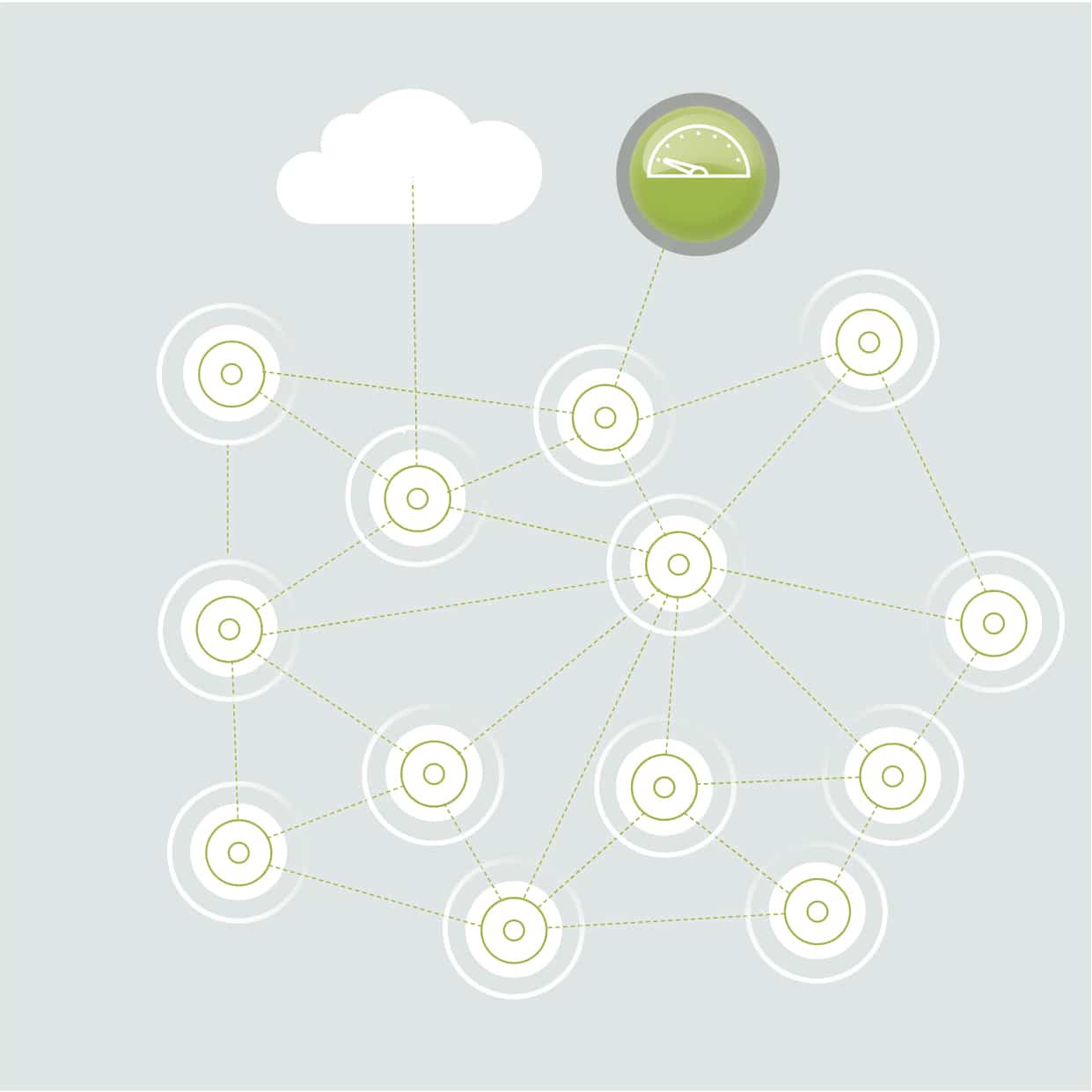

Long Read:
How NeoCortec's Second-generation Mesh technology is changing the landscape of Low Power Wireless Connectivity.
| Share |
|
When it comes to sensor networks, few will question that mesh topologies have significant advantages compared to star type networks. Ideally its robustness and ability to handle changes and obstacles speaks in favour of mesh. On top of this, mesh is a mature technology that has been around for a long time. Mesh has been tried and tested in a multitude of application areas, and it has been substantially improved over the years.
Initially, when NeoCortec set out to design its battery-powered wireless connectivity solution, it was decided to base it on mesh principles. It was clear however, that mesh had to be re-engineered in order to meet the requirements for low-power, scalable IoT products. Existing mesh network technologies, deeply rooted in the IP (Internet Protocol) world, simply was not capable of handling the requirements for network size, installation flexibility and long lasting performance of all nodes in the network.
The issues with Legacy Mesh
Mesh network technologies rooted in the IP world – Legacy Mesh Networks as we prefer to call them – like Zigbee, Thread, WiFi and Bluetooth, had a range of issues that make them clumsy, expensive, and time-consuming to work with. They simply contained too many trade-offs.
Taking a closer look at Legacy Mesh Networks we found they suffered from a range of disadvantages, mainly:
— Power-consuming asynchronous operation – Devices are not synchronized to each other timing-wise, meaning you are unable achieve ultra low power consumption in all parts of the network. Because of asynchronous operation you need concentrators in the network. These concentrators consume a lot of energy, so they cannot run on batteries but need mains power. Ultra low power is only achieved in “end-nodes” without routing capability.
— Tricky Network Management – You need centralized network management, resulting in single point of failure and thus increasing vulnerability. Also, expanding the network gets complicated: It is a time-consuming effort to grow your network in size.
— Inefficient payload transmission – Payload packages are either routed or flooded into the network. Routed messaging uses algorithms from IP networks, and these are not suited for dynamic topologies nor for deep network structures with many hop counts. Flooded messaging is inefficient and not a good approach for battery powered devices.
Because of all the compromises, many companies decided to discard Wireless Mesh, in favour of non-mesh solutions like LoRa and Sigfox, although these technologies build on connectivity principles inferior to mesh.
Developing second-generation mesh
At NeoCortec we decided to do the opposite: To develop what we call Second Generation Mesh Technology, adapting the basic Mesh principles to the world of wireless, low-power sensor networks for IoT applications.
We are taking pride in having found completely new ways to address power consumption, scalability, and security, while adding simplicity. We have designed NeoMesh to be the most versatile wireless network for connecting things:
The NeoMesh self governing nodes form networks autonomously, allowing for extreme scalability, node mobility and long lasting, hassle free operations. These are the main features of this Second Generation Mesh Network:
— Overcoming the pitfalls of asynchronous operation – In NeoMesh operations are synchronized, meaning the entire network can be low power and thus run on batteries for many years. Each node in the network is asleep most of the time and only wakes up when it needs to. This means all nodes are equally power efficient, while maintaining full routing capabilities.
— Firing the Network Manager – We have de-centralized the management of the network. No centralized Network Management is needed to make NeoMesh work. The neighbor relations of the nodes are created and maintained locally, meaning that complexity stays local. This makes it easy to go from 100 to 1.000 to 10.000 nodes in a network.
— Optimizing payload transmission – Our patented NeoMesh routing protocol creates the route of data packages while they travel through the network. This means the network can handle obstacles, moving nodes etc. The protocol is especially designed to allow real time routing of data over long distances and multiple hops, while using very little energy.
On top of this, we have developed NeoMesh to meet high standards of robustness and security.
A high level of security is ensured through ACK/NACK, AES128 Encryption, 2 x CRC16, and Challenge/Response authentication between source and destination. Robust radio communication is ensured through frequency hopping to avoid radio noise & dead channels.
Adding simplicity
And we have developed NeoMesh to be as easy to use as possible. The network is self-forming. Just add an antenna and a power source. To expand the network you just add new nodes and they will connect to the network automatically.
These are the features that lead us to claim that NeoMesh changes the landscape of Low Power Wireless Connectivity. We believe that NeoMesh is the most versatile wireless network for connecting things. Using Second Generation Mesh Technology it offers true low power connectivity, together with robustness, flexibility, and easy scalability, full ownership of the network, and no recurring licensing fees or hidden costs.